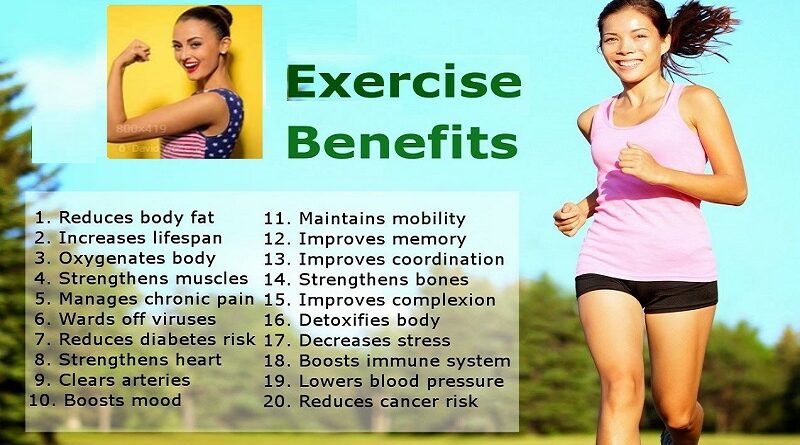The Best Exercises for a Healthier You: A Simple Guide to Fitness Success
Regular exercise can seem daunting if you’re not an athlete or a devoted fitness enthusiast. The crowded gym, the complex equipment, and the thought of carving out time from your busy schedule can be overwhelming. But the good news is that staying healthy and fit doesn’t require running marathons or lifting heavy weights. Some of the most effective exercises can be done without stepping foot in a gym and can significantly enhance your overall health. In this article, we’ll explore some of the best exercises you can do for a healthier you and keep your body strong, mind sharp, and spirits high.
The Best Exercises for you
1. Swimming: The Ultimate Full-Body Workout
Swimming is often hailed as the best exercise, and for good reason. It’s a full-body workout that strengthens your muscles, boosts your cardiovascular health, and enhances your flexibility, all while being gentle on your joints. The buoyancy of the water supports your body, making swimming an ideal exercise for individuals with arthritis or joint pain.
“Swimming is good for individuals with arthritis because it’s less weight-bearing,” explains Dr. I-Min Lee, a professor of medicine at Harvard Medical School. The water’s resistance also helps you build strength and endurance. Beyond the physical benefits, swimming has been shown to improve mental health by reducing stress and improving mood. If you’re looking for a lower-impact alternative, consider water aerobics, which offers similar benefits with a focus on burning calories and toning muscles.
2. Tai Chi: Meditation in Motion
Tai chi, a Chinese martial art known as “meditation in motion,” is an excellent exercise for both the body and mind. It involves a series of slow, graceful movements that flow seamlessly from one to the next, promoting balance, flexibility, and strength. Tai chi is particularly beneficial for older adults because it helps improve balance, a critical component of fitness that often declines with age.
Dr. Lee emphasizes the importance of balance as we age, stating, “It’s particularly good for older people because balance is an important component of fitness, and balance is something we lose as we get older.” Tai chi is accessible to people of all ages and fitness levels, and classes are widely available at community centers, health clubs, and senior centers. Taking a class can help you learn the proper form and get the most out of this gentle yet powerful practice.
3. Strength Training: Build Muscle, Burn Calories
Many people associate strength training with bulky muscles and heavy lifting, but it doesn’t have to be that way. Lifting light weights can help you build and maintain muscle mass without adding bulk. Muscle strength is crucial for overall health because it helps you stay active and burn more calories even at rest.
“If you don’t use muscles, they will lose their strength over time,” says Dr. Lee. Strength training is also beneficial for maintaining brain function as we age. The key is to start with light weights—one or two pounds is sufficient for beginners—and gradually increase the weight as your strength improves. Proper form is essential to avoid injury, so consider working with a trainer or taking a class to get started. Strength training doesn’t just build muscle; it also helps with weight management, bone density, and metabolic health.
4. Walking: The Simple, Powerful Exercise
Walking is one of the simplest and most accessible forms of exercise, yet it’s incredibly effective. It’s a low-impact exercise that can help you manage your weight, improve your cholesterol levels, strengthen your bones, and keep your blood pressure in check. Walking is also a great way to lift your mood and reduce your risk of chronic diseases like diabetes and heart disease.
Research shows that walking and other forms of physical activity can even enhance memory and prevent age-related cognitive decline. All you need is a pair of comfortable, supportive shoes, and you’re ready to go. Start with 10 to 15 minutes of walking at a time and gradually increase your distance and speed. Aim for 30 to 60 minutes of walking most days of the week to reap the full benefits of this simple yet powerful exercise.
5. Kegel Exercises: Strengthen Your Pelvic Floor
While Kegel exercises might not help you build visible muscles or burn calories, they play a crucial role in maintaining your overall health. Kegels strengthen the pelvic floor muscles, which support the bladder and can help prevent incontinence. These exercises are particularly important for women, but men can benefit from them as well.
To perform a Kegel exercise, squeeze the muscles you would use to stop the flow of urine or prevent passing gas. Hold the contraction for two to three seconds, then release. Make sure to relax your pelvic floor muscles completely between contractions. Repeat this exercise 10 times, aiming to do four to five sets each day. Kegel exercises are easy to incorporate into your daily routine and can be done discreetly almost anywhere.
Exercise benefits
- Greater longevity
- Decreased risk of many diseases: diabetes, many types of cancer, Decreased risk of stroke, and heart disease.
- Better blood cholesterol levels
- Controlled blood glucose
- Better blood pressure
- Decreased anxiety, better sleep, better quality of life.
- Helps with weight management
Making Exercise a Part of Your Life
Exercise doesn’t have to be complicated or time-consuming. Whether you prefer swimming, tai chi, strength training, walking, or Kegel exercises, each of these activities offers unique benefits that contribute to your overall health and well-being. The key is to find activities that you enjoy and can easily fit into your daily routine.
Remember, exercise is one of the best investments you can make in your health. Start small, set realistic goals, and gradually increase the intensity and duration of your workouts. By incorporating these five exercises into your life, you can improve your physical health, enhance your mental well-being, and enjoy a more active and fulfilling lifestyle.
If you’re unsure where to start or need guidance on creating a balanced exercise plan, consider taking a course like Harvard’s “Starting to Exercise Online Course.” This course offers expert advice on blending aerobic workouts, strength training, and stretching exercises to create a routine that fits your life and helps you stay motivated.
So, take a deep breath, lace up your shoes, and get moving. Your body and mind will thank you for it!
SUMMARY
Keep in mind that any amount of exercise is better than none. You don’t have to leave your home or visit a gym to stay active. Plenty of exercises can be done right in your living room. Additionally, spending time outdoors offers extra health perks, like improving the mood and reducing stress.




